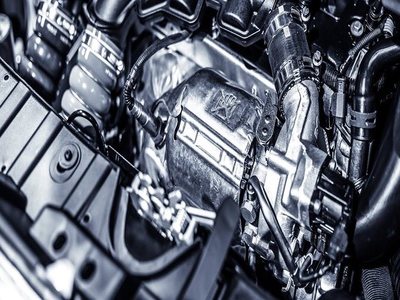Ask a selection of people this question and one of the first things that will spring to mind is engine size. After all, big engines tend to produce more power than small ones. The second article on Power and Torque lists some data for standard road engines. It should be apparent that there is quite a big spread in the amount of power per litre that the engines on the lists produce.
Even allowing for them having 2 valves per cylinder or 4 valves per cylinder doesn’t help much. The spread of outputs is from only 45 bhp per litre for low tuned 2 valve engines up to 200 bhp per litre for motorbike engines. Taking these engines, or any other sample, and plotting a graph of power against engine size won’t produce anything like a straight line.
To answer the question we need to understand more about how engines produce power in the first place. All the power comes from the fuel burned – the more fuel the engine can burn per minute the more power it can produce. But to burn fuel, or anything else, we need oxygen and that comes, at least in the case of most engines, straight from the air. To burn petrol efficiently in an engine it needs to be mixed with about 14 times its own weight of air.
For best power about 12.6 times as much air and for cruise conditions and good economy about 15 times as much. A gallon of petrol (UK gallon) weighs about 7.5 pounds – so every gallon of fuel needs about 100 pounds of air. Air weighs just over 2 pounds per cubic yard so that translates into about 50 cubic yards of air per gallon of fuel. To put it into perspective, that’s about the same volume of air as in a room 12 feet by 14 feet.
So the problem of power potential becomes one of processing as much air as possible per minute. The fuel is not a problem – we can squirt in as much or as little of that as we need just by calibrating the carb or fuel injection system. So what limits the amount of air the engine can process? Well the ultimate limit comes from the flow capability of the cylinder head.
Even a small engine can potentially pump a lot of air if it spins fast enough but if the cylinder head can’t flow that air then the cylinders can’t fill. The flow capability of the cylinder head is in turn dictated by the size and number of the valves because these are what create the biggest restriction to flow. The inlet valves are the critical ones here because all they have going for them to allow air through them is the force of atmospheric pressure. The exhaust valves have the piston acting as a direct pump so they create less of a problem. So we can summarize all of this in the following rule:
The single biggest factor that determines an engine’s ultimate power potential is the total inlet valve area
So does engine size play any part at all here? Well to an extent yes – because the bigger we make the engine the more valve area we can cram into it. But it isn’t the engine size by itself that produces the power. There are other ways of getting more valve area into a given engine capacity. We can use 4 valves per cylinder instead of just 2 – that makes better use of the available bore area because less space is wasted in the gaps between the valves.
We can also build the engine with more cylinders which also leads to more piston area and therefore more potential valve area. The final thing we can do is to alter the bore/stroke ratio. The bigger the bore and the smaller the stroke, the greater the bore area for a given capacity. There are limits of course to how far we can take all these things. Engines have been built with more than 4 valves per cylinder but it gets increasingly complicated to design the camshaft mechanisms.
The more cylinders the engine has, the bigger and heavier it gets and also frictional losses increase. If the bore is made too big compared to the stroke then the piston doesn’t travel very far and gets in the way of the valves opening – also the combustion chamber shape gets further away from the ideal compact design and ends up wide and flat which doesn’t burn the fuel mixture very efficiently.
So like everything else, these matters are all compromises. Road engines tend to have longer strokes and fewer cylinders. Race engines have bigger bores, shorter strokes and more cylinders. But at the root of any engine design, it is the total inlet valve area that determines the power potential. The smaller the engine, the faster it needs to rev to make use of that airflow potential but other than that, the engine size doesn’t really make too much difference to the power capability.
In the next article we’ll look in more detail at the other factors that need to be considered along with the valve area to determine the power potential.

